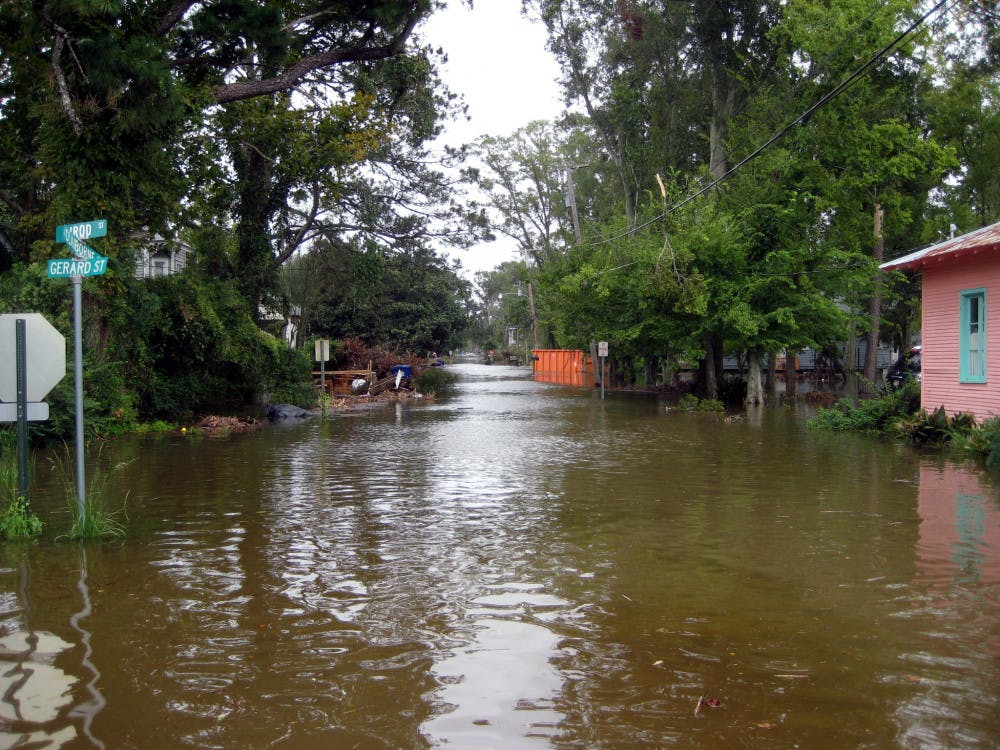Andrew Bellows
Staff Writer
Hurricane Ida made landfall in the Southeastern United States on Aug. 29, 2021. With winds up to 150 miles per hour, Ida steamrolled through anything in its path. It has been identified by NASA Earth Observatory as the fifth strongest hurricane to make landfall in US history. Hurricane Katrina, a similarly powerful storm, made landfall on the same date just sixteen years earlier. Although not as strong as Katrina, Ida has proven to be incredibly destructive.
Ida made its way North as a tropical storm, spawning tornadoes and flooding states like New Jersey, New York, Pennsylvania and Maryland. Universities and school districts around the area were forced to cancel classes for the day, including Kean University and Elizabeth schools. According to Axios, over 101,000 Pennsylvanians, 73,000 New Jerseyans, and 51,000 New Yorkers lost power during the storm. States across the mid-Atlantic declared state of emergencies in response to Ida.

According to ABC News, 67 have been killed, a number that is expected to grow as time goes on. Fifty-one of these deaths were from the Northeast, largely due to flooding.
CNN reported that more than 400,000 homes in both Louisiana and Mississippi do not have power, as Ida took down the power grids in these areas. Long lines for gasoline have dominated the scene in Louisiana.
AP News interviewed Renell Debose, who experienced the horrific effects of Hurricane Katrina just sixteen years ago and now faces Hurricane Ida’s wrath: “I love my city. I’m built for this. But I can’t make it without any air conditioning.”
Scooter Resweber, Police Chief on Grand Isle, a Louisiana town on a barrier island in the Gulf of Mexico, told AP News, “I’ve ridden out other hurricanes: Hurricane Isaac, Katrina, Gustav, Ike… This is the worst.” ABC News reported that half of Grand Isle’s properties were heavily damaged to the point where officials called the island “uninhabitable.”
According to research done by Hurricane Science, hurricanes are frequent in the southeastern US because of global winds. They form in tropical areas, like the Caribbean, where humidity is high. Due to easterly winds in the Caribbean, they begin to travel west. Hurricanes rise in latitude due to a phenomenon called beta drift. As the storm moves up in latitude, the easterly winds turn into westerly winds, pushing the storm further east. Therefore, storms that hit Florida sometimes move up the coast and fade out into the Atlantic, missing northern states.
Levees that were designed to prevent flooding in New Orleans generally worked, avoiding another Katrina-like disaster in the city. According to Accuweather, Ida’s effects were more strongly felt in smaller communities outside of New Orleans. Rescue missions in Louisiana have saved hundreds of people, many screaming on their rooftops for help. Despite an abundance of property damage, local citizens and the National Guard saved a lot of lives. Tulane University has announced that in-person classes have been suspended until Oct. 6. The school has created a base in Houston where students can get food and housing.
There are many ways to contribute to rescue and rebuilding efforts, like the American Red Cross, Americares, and Project Hope. All of these organizations are reputable charitable organizations that will donate directly to Hurricane Ida relief.







